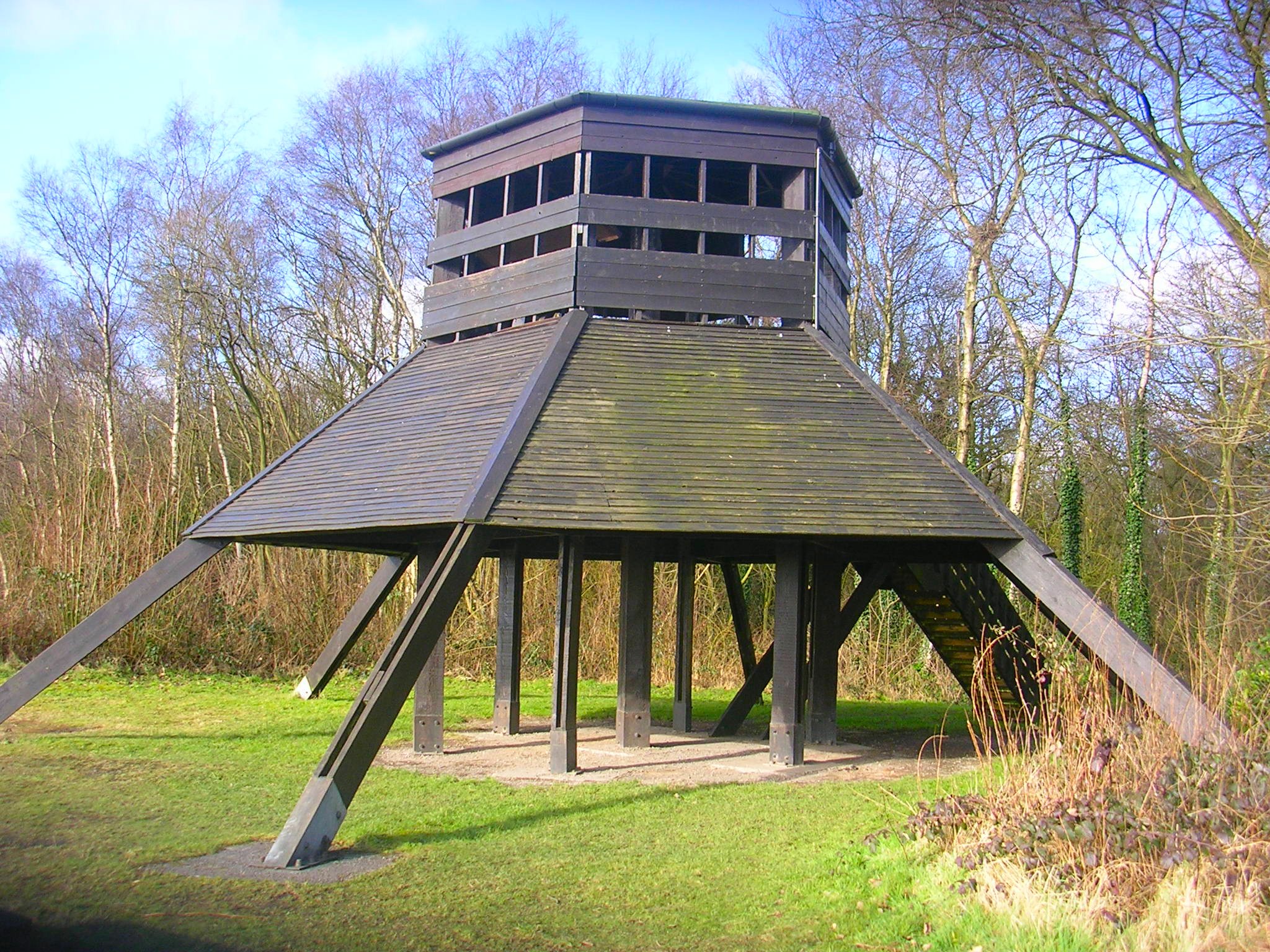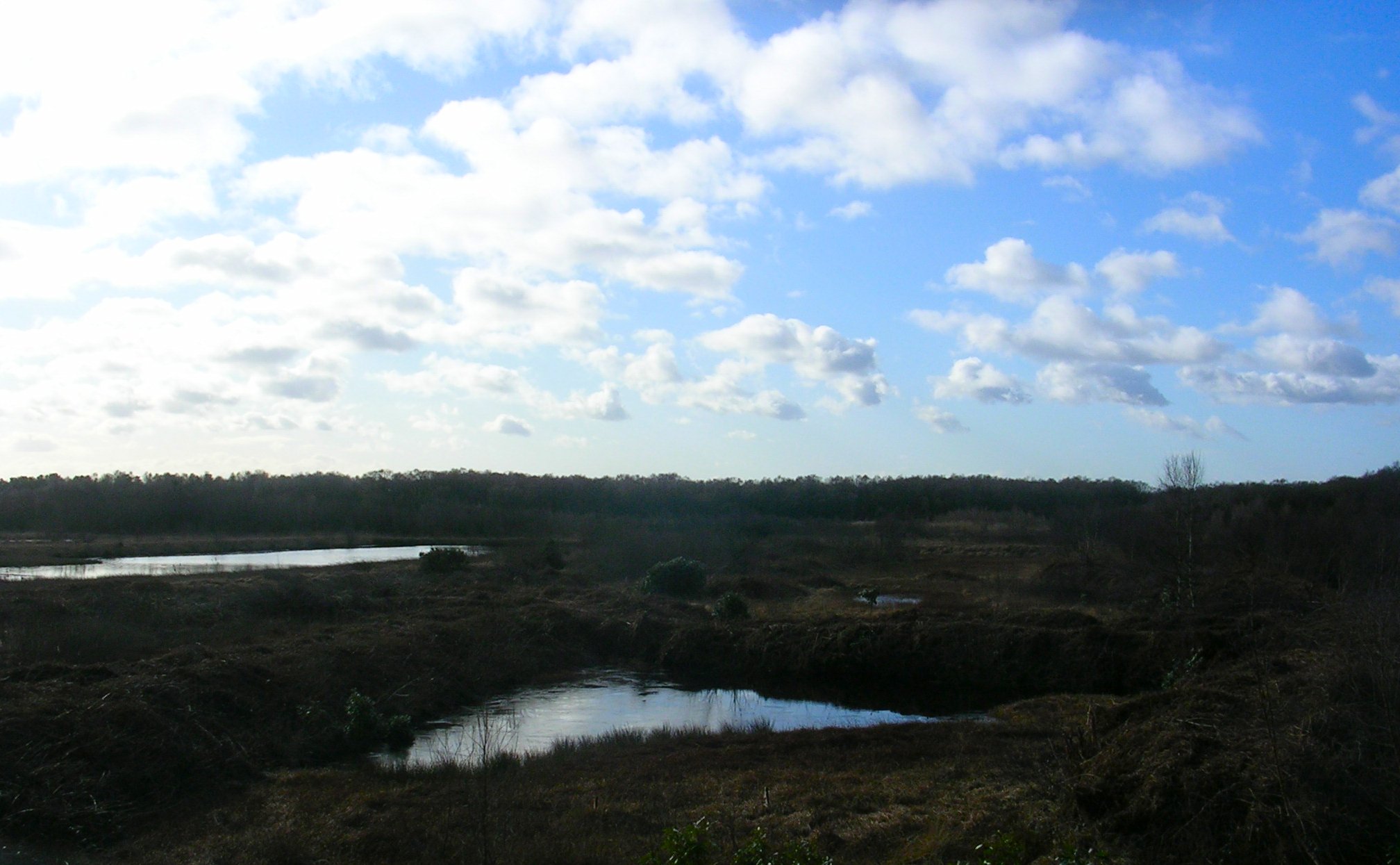Early sunbeams on a quiet wander
After calling the birdline and discovering that no outrageously special birds would be out and about at the moment it was decided to use the day to visit a couple of nearby locations and see what we would duly 'drop on'. 30 minutes down the motorway and at Risley Moss we arrived with a glorious sun shining, wall to wall blue skies and a reasonable temperature to appreciate - now why can't we have something like this in summer?
After a call each to the piddle and ponder house we indulged in our initial mooching moment. Immediately behind the visitor centre is a small pond and just at the side of this is a carved wooden Newt (Great Crested perhaps) that is now looking a little worse for wear. However, protruding from the neck and flank of this rotting beast are several tiers of the Oak Mazegill (Daedalea quercina), a non too common bracket that is always worth a second look. A quite sturdy fungus that is easy to recognise with a little practice (he says tentatively) the growing substrate, pore surface and general semi-conical form are all field clues to the identity of this fine species. Daedalea is derived from Daidalos, the builder of the labyrinth of the Minotaur in Crete, which is in reference to the elongated and slightly meandering labyrinthiform pores of this fungus. Quercina of course relates to the fungus' liking for Oak wood. So now you know!
Next port of call was the bird hide/woodland feeding station that has massive potential but today was hampered by 12 feeding and fighting Grey Squirrels (Sciurus carolinensis) and a roaming black cat (bastard sp.) - ooh I hate cats. Both these species are the scourge of birds but if I was going to eradicate anything it would be those darn moggies who seem to do nothing productive only crap in everyone’s garden and kill any wildlife not wary enough to stay away. It amazes me why people buy a pet only to turf it out and let it roam around causing havoc to the natural world. As for the squirrel - yes, a menace, but more of a naturalised species and is it the squirrels fault that it is so tough and hardy? A difficult call this one but these cute little buggers are also guilty of much feathered crime. Despite these two pesky species there were a few birds around with several Dunnocks (Prunella modularis) feeding on the ground, Chaffinch (Fringilla coelebs) and Bullfinch (Pyrrhula pyrrhula) flitting hither and tither, Great (Parus major), Blue (Cyanistes caeruleus), Coal (Periparus ater) and Willow Tit (Poecile montanus) using the dangling feeders and a few Blackbirds (Turdus merula) keeping their distance and fleeing at the slightest noise. A Great Spotted Woodpecker (Dendrocopos major) fed at the fat and gave great views in the dappled sun but other than that the species spread was blatantly low. Leaving the hide it was with great depression we saw a couple with their toddler walking along quite contentedly letting their dog crap on the footpath and wander away without a care in the world. Again, why have a pet and be irresponsible? It is just purely baffling behaviour and perhaps if their young daughter tripped up and fell in the foul mess and caught some vile disease the parents may just think again? Harsh - well that's the only way some people learn - the hard way. Lip bit - we moved on to avoid me blowing a fuse and basically ruining a chilled out day (best way - my good lasses know best).
Walking along the pathway to the Tower Hide and chance was taken to inspect an area we know where Scarlet Elf Cup (Sarcoscypha sp.) grows.

The Tower Hide - impressive and giving good views over the moss
The mossy logs were there and within minutes many cups were found. Alas, again I took one just to confirm identification at home and Sarcoscypha austriaca was the result once more. 60 cups were counted on the day which is quite usual for this delightful ascomycete! At the Tower Hide a few minutes were used to soak up a few of the suns relaxing rays and just take in the essence of the moss itself. A Sparrowhawk (Accipiter nisus) flew swiftly over, a Jay (Garrulus glandarius) squawked away in the scrub and a Buzzard (Buteo buteo) gave a few brief calls but remained out of sight. Looking out over the mossland thoughts were of summer days and the dozing Slow Worm (Anguis fragilis), the nervous Common Lizard (Zootoca vivipara) and the elusive and retiring Adder (Vipera berus) that all reside in the precious habitat along with the numerous dragonfly species that can be seen around the watery areas. Perhaps the most sought after Dragonfly is the Black Darter (Sympetrum danae), a stunning marvel that, despite its less than garish colours, is always a beauty to encounter - especially that fine male with his glossy black body and somewhat clubbed abdomen. It is certainly one we drool over every time we see it.
The rest of the stroll today was laid back and much needed with very few people present and the weather maintaining a strong grip on the sunny side of things. The Witches Broom Gall (Taphrina betulina) was seen and a photographic attempt was made but, as is frequently bloody happening these days, the darn batteries were kaput in the camera. What these chemical creations are made up of these days is anyone’s guess but a rolled up tube of fine cow crap would last longer I am sure.

A view over the moss in winter - atmospheric and awaiting the warm rays of the the spring to bring an abundance of life
Back at the visitor centre, a check of the sightings board revealed we hadn't missed anything of note so haste was made to pop in the car and hit our next destination. Risley Moss we shall be back!
Spacious Carrington
Carrington Moss is positioned South-West of Manchester and is roughly 100 acres of former peat bog that is now used as farmland with several nature reserves created within the boundaries. Work is ongoing I believe to protect this area and some of the valuable habitats found therein with birds such as Yellowhammer (Emberiza citrinella), Grey Partridge (Perdix perdix) and Corn Bunting (Emberiza calandra) worthy of the effort. It is in fact bird watching that attracts a few ardent moochers throughout the year and that in itself is no bad thing helping put this vulnerable site on the map. Despite this, I feel there is a lot to be discovered at Carrington Moss with insects and fungi 2 particular areas that may turn up some nice surprises - you just never know!
The last time we had visited this area was over 12 years ago with news pending of a Manchester United training facility soon to be erected and thus putting us off visiting the area again. Curiosity, coupled with the fact of being in the area, combined today to make a tentative visit and what transpired was an investigative walk with not much present but obvious potential displayed. As soon as we left the car a Goldfinch (Carduelis carduelis) was observed feeding amongst spaced out Birch trees and remaining at low level which is quite a frequent occurrence during the winter months when food supplies are harder to find. On the opposite side of the road a flock of Wood Pigeons (Columba palumbus) frequented a mown area with 2 Stock Doves (Columba oenas) joining in the feast. The route taken (after acquiring advice of a local walker) was the pathway down the side of the fenced off nature reserve where views of the nearby water where impeded by scrub and the aforementioned fence. Picked out were Tufted Duck (Aythya fuligula), Mallard (Anas platyrhynchos), Black Headed Gull (Chroicocephalus ridibundus) and a single Moorhen (Gallinula chloropus) as well as a few Canadian Geese (Branta canadensis) so attention was turned to the open expanse of the fields which were incredibly void of life. A Buzzard (Buteo buteo) perched on a pylon and Skylarks (Alauda arvensis)were heard mooching at a distance within the stubble but other than that - zilch! Nevertheless this was only a reccie and even though little was had there was enough habitat to cause interest. Dissecting pathways, bordered by a variety of trees, were littered with woodchip and logs with many plants just poking through the still cold soil. What summer would bring is anyone’s guess and the under-watched areas are always worthy of a visit now and again just in case something outrageously special is being bypassed.
A few hay piles were checked for fungi as were many dead trees but only Blushing Bracket (Daedaleopsis confragosa) and Razorstrop Fungus (Piptoporus betulinus) were seen although alongside one field the edge of the stubble was massed with old puffballs which I presumed to be Gem Studded Puffball (Lycoperdon perlatum). Growing in large clumps and numbering well into the hundreds it is always pleasing to give these tired reproductive bags a good old stomp and help release the millions upon millions of spores into the wind. The clouds of olive-green dispersed and left our boots and wellies covered in a nice powdery texture leaving one to wonder which one of these microscopic spores would travel furthest and bear fruit. The distances covered by these miniscule packets of enzymes must be enormous and surely some may end up in distant shores where, when completing the cycle, someone else will have a good stamping session and begin the cycle again!
So that was it - a local-ish kind of day with nothing outrageous discovered but a nice walk had, some old friends appreciated and the potential of 2 places further uncovered. Sometimes it is just good to stroll around and consider the familiar rather than get caught up in numerous escapades seeking out the obscure. Nature is all around us and we need to appreciate the near and far, the common as well as the uncommon.